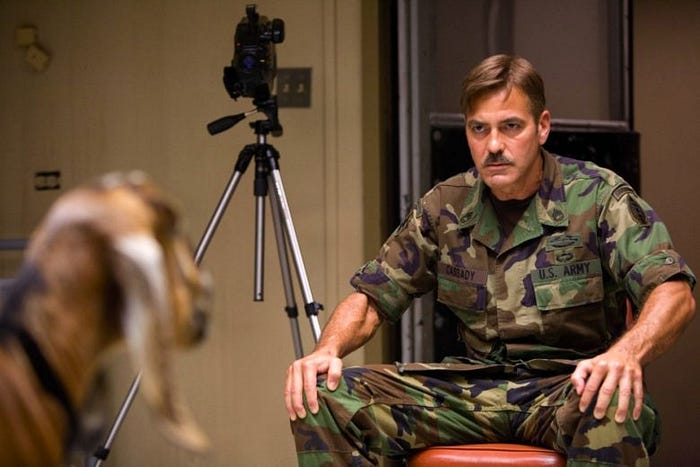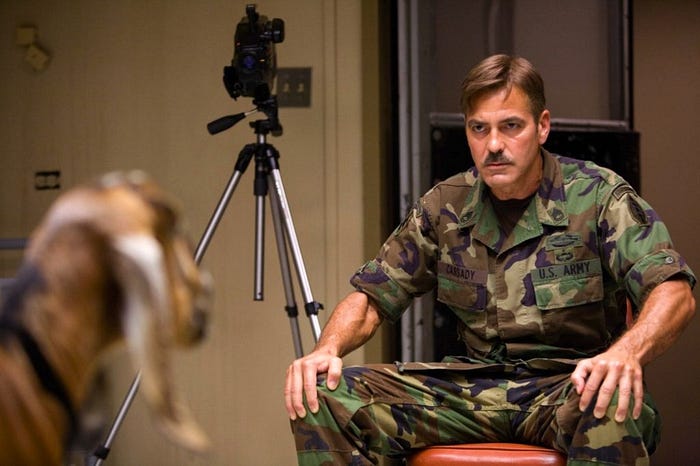5 Real Paranormal Studies Conducted by U.S. Universities

Is it possible to move objects with our minds? Can some people predict future events? While many mainstream scientists consider topics in this field as pseudoscience, there have been serious academic studies researching everything from telepathy to communicating with the dead. The first systematic study of extra sensory perception (ESP) was conducted in 1882, when the Society for Psychical Research was founded in London. Researchers in the field of parapsychology (the study of paranormal psychic events) have produced astounding data, despite the difficulty of capturing and measuring anomalous experiences in the confines of a laboratory. And parapsychological phenomena (psi) are being investigated by highly trained academics from various fields and disciplines, at numerous accredited universities and research centers worldwide. Here are five real paranormal studies that have been conducted or are still in existence at U.S. universities.
5. University of Arizona: Do Our Personalities Survive Death?
The University of Arizona created the VERITAS Research Program in 2006 to explore the possibility that human consciousness (or personality or identity) survives physical death. The project operated out of the Laboratory for Advances in Consciousness and Health (LACH) at the University of Arizona’s Department of Psychology. Following its completion in 2008, LACH director, Dr. Gary E. Schwartz, expanded the VERITAS study into a broader, more comprehensive spiritual communications project called the SOPHIA Research Program. This ongoing program investigates communication with discarnate energies, such as spirit guides, angels, and even with a higher power or divine being, with the focus on “healing and life-enhancement.” According to the LACH website, “consciousness exists and can be investigated scientifically,” and “consciousness is in a dynamic state of change and evolution.” Schwartz’s research projects at LACH also include investigations into such fascinating areas as quantum holographic consciousness, the universal intelligence hypothesis, and animal consciousness. There is no readily accessible information on the results of these projects, but there are two books on some of the material available for purchase, written by … you guessed it … Dr. Gary E. Schwartz.
http://lach.web.arizona.edu/veritas_research_program/
4. Cornell University: Can People See the Future?

In 2010, Cornell University social psychologist Daryl Bem concluded a meticulous eight-year study on the subject of precognition — the ability to perceive things before they actually happen. The research involved nine experiments with 1,000 Cornell undergraduate students, resulting in compelling evidence that human beings do, in fact, possess some psychic ability to foresee future events. Bem’s study, “Feeling the Future: Experimental Evidence for Anomalous Retroactive Influences on Cognition and Affect,” was published in the American Psychological Association’s Journal of Personality and Social Psychology in 2011. “Of the various forms of ESP or psi, as we call it, precognition has always most intrigued me because it’s the most magical,” Bem said. His findings created quite a stir in the media and parapsychology community, much of it positive. However not everyone was impressed with Bem’s study, and among his fiercest critics was Chris French, professor of psychology at Goldsmiths, University of London, who tried to replicate the experiments, but did not receive the same results. Just a heads up — French is the former editor in chief of The Skeptic magazine and a regular “guest skeptic” in the British media.
http://www.apa.org/pubs/journals/features/psp-a0021524.pdf
3. University of Virginia: Do We Survive Death?
This is an actual question posed by the faculty of UVA’s Division of Perceptual Studies (DOPS) in September 2016. This group of highly acclaimed, credentialed scientists shared their research findings on phenomena such as reincarnation, near-death experiences and altered states of consciousness, at a public lecture event held at the Science Museum of Boston. Founded in 1967 by Dr. Ian Stevenson, originally as the Division of Personality Studies, DOPS’ mission is “the scientific empirical investigation of phenomena that suggest that currently accepted scientific assumptions and theories about the nature of mind or consciousness, and its relation to matter, may be incomplete.” Basically they study paranormal phenomena such as ESP, past lives, and out-of-body experiences. DOPS is a very open and friendly group of scientists, sharing information regularly at events and talks, and they even have a Facebook page.
https://med.virginia.edu/perceptual-studies/
2. Stanford University: CIA Study Inspires George Clooney Film

Stanford University became the first U.S. academic institution to officially study extra sensory perception (ESP) and psychokinesis (PK). In 1912 John Edgar Coover, a psychologist and parapsychologist, conducted a psychical research program including approximately 10,000 experiments on 100 subjects to test for ESP. After four years of research he concluded that: “Statistical treatments of the data fail to reveal any cause beyond chance.”
But the university is better known for the mysterious, 1970s Stargate Project, conducted at the Stanford Research Institute (SRI). The CIA backed this secretive, $20 million project to explore the practical applications of remote viewing — the ability to use ESP to “see” or “sense” a far-distant object, person, or place. The CIA hoped to use remote viewers as “psychic spies” or “psychic warriors.” This secret program inspired the 2009 George Clooney film, “The Men Who Stare at Goats.” The research officially ceased in the mid-1990s, because of “failure to yield useful application and intended objectives.” Yet theories abound that the program never shut down and continues in an unofficial capacity. Since 1995 the CIA has declassified Stargate documents, revealing some interesting information, including the fact that famous illusionist Uri Geller was one of the project’s early subjects. The self-proclaimed psychic and well-known spoon bender, apparently impressed SRI parapsychologists, who claimed that he, “demonstrated his paranormal perceptual ability in a convincing and unambiguous manner.” The project’s Participant Consent Form is included among the released documents; it rather ominously reminds participants that the “potential for injury during some training cannot be conclusively ruled out.”
https://www.cia.gov/library/readingroom/document/cia
1. Duke University: Researcher Breaks New Ground in Paranormal Studies

Duke University in Durham, N.C., ran one of the most famous paranormal research labs in the United States, The Duke Parapsychology Laboratory. Duke researchers J.B. Rhine and William McDougall established it in 1935 as part of the college’s main psychology department. The mission: Search for scientifically quantifiable evidence of paranormal or psi phenomena, such as ESP and psychokinesis. Rhine, considered the “father of modern parapsychology,” popularized the term ESP in his book New Frontiers of the Mind. In the mid-1930s a New York Times article made him famous, calling his work “the most important research of the century in his subject.” In his groundbreaking experiments on telepathy, clairvoyance and precognition, Rhine used Zener cards — which are a deck made up of five simple symbols: a circle, cross, three wavy lines, a square and a star. Rhine retired in 1965 and was given the choice to leave the research lab at Duke, or take it with him. He opted for the latter, and formed an independent non-profit organization called the Foundation for Research into the Nature of Man (FRNM) which was later renamed The Rhine Research Center, which continues to conduct parapsychology research today.
Although studies and tests conducted over several decades produced significant results, the scientific community criticized Rhine for methodological flaws and lack of objectivity. Still, decades after his death, he’s fondly remembered as a pioneer in the field of parapsychology, someone who opened the doors to legitimate, methodical scientific study of phenomena that we may, realistically, never be able to quantify or prove unequivocally. Unless of course, we experience or witness something ourselves that cannot be explained away by science.
http://www.rhine.org/
One More: Princeton University Study Faces Ridicule
For almost three decades Princeton University hosted the controversial Princeton Engineering Anomalies Research (PEAR) program. Established in 1979, PEAR attempted to prove that mind affects matter, conducting studies on ESP and telekinesis from a small laboratory in the basement of the university’s engineering building.
A group of scientists, led by PEAR founder, Robert G. Jahn, dean emeritus of Princeton’s school of engineering, gathered data from thousands of lab hours. The statistics showed a small but verifiable effect of human intention on machines that is not attributable to chance or to any external factor. The lab closed in 2017, and in a New York Times article, Jahn explained the reason why: “For 28 years, we’ve done what we wanted to do,” he said, adding that, “there’s no reason to stay and generate more of the same data … If people don’t believe us after all the results we’ve produced, then they never will.” The privately financed program had a strained relationship with Princeton and was considered an embarrassment to the university, which merely tolerated its existence. Journals refused to review the data and critics were plentiful; a Maryland professor even called the work “voodoo science,” a sentiment echoed by many of his peers. Jahn, however, was not deterred and is adamant that his lab has proved that there is at least some empirical evidence that mind affects matter.
On the other hand PEAR’s activities did attract the attention of government agencies working in intelligence and defense, but Jahn said they refused to cooperate because they did not want to compromise their “scientific freedom.” So, apparently, somebody far up the ladder took his work very seriously. PEAR closed in February 2007, being incorporated into the “International Consciousness Research Laboratories” (ICRL).
This article was originally published on www.Listosaur.com
Originally published at https://mshorror.com on April 30, 2020
